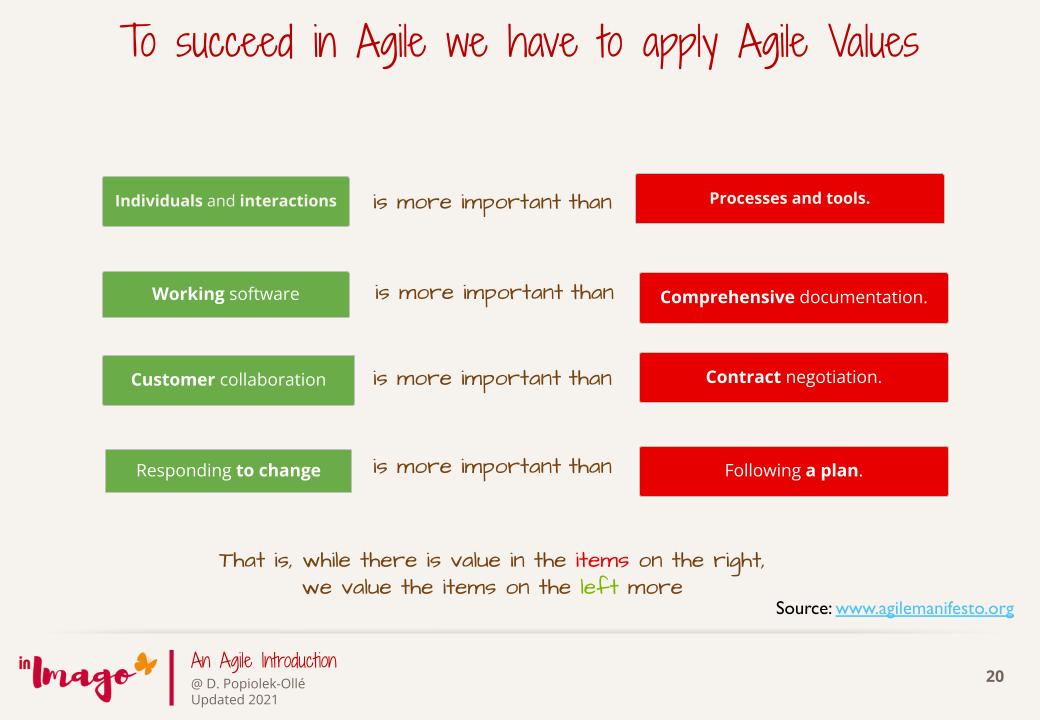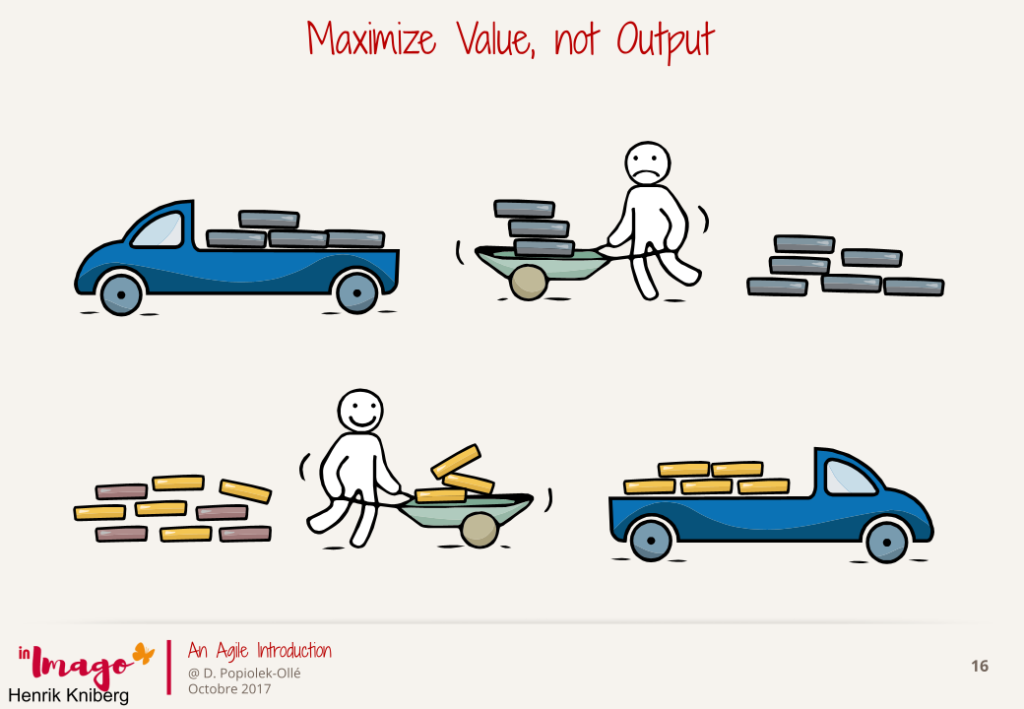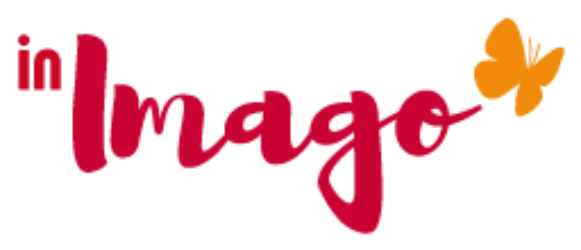- Agile in Action: moving from theory to experimentation
- The Agile Manifesto: A Timeless Guide for Transformation
- Agile: an adaptive and iterative Approach
- Agile: From Intrinsic Motivation to Institutional Paradox
- Final thoughts: The Agile Manifesto as a Living Philosophy
- Agile Coaching: feedback on the use of the Agile Manifest
- Understanding the phenomenon
- From a functional point of view, the Agile values and principles are:
- At the dawn of a cultural renaissance
- 1. Individuals and interactions are more important than processes and tools
- 2. Software that works (or in the broad meaning of product or service ) are more important that exhaustive documentation.
- 3- The collaboration with the customer is more important than the negotiation of the contract.
- 4- Answering a change is more important than following a plan.
- Accept change: an Agile practice
- The Agile Manifesto, in summary
- Agile manifesto, 12 principles
The 4 Values of agility is a response to complexity to develop products & servicesin a short period of time.

The Agile Manifesto distills Agile into four key values that serve as a compass for navigating complexity:
1. Individuals and Interactions Over Processes and Tools
Why does this matter?
Processes are linear representations of workflows, whereas interactions drive innovation and adaptability. Agile replaces rigid processes with intention-driven collaboration, ensuring:
- Challenging the status quo: Encouraging dialogue to break through inertia.
- Generating movement: Prompting action that drives meaningful progress.
- Engaging teams in a shared purpose: Strengthening alignment beyond written documentation.
Face-to-face interaction fosters authentic collaboration, where non-verbal cues and emotional intelligence enrich discussions, driving innovation and deeper engagement.
2. Working Software Over Comprehensive Documentation
What does this change?
Traditional approaches relied on exhaustive documentation—technical specifications, requirement lists, test plans—before even starting development. Agile flips this approach, focusing on:
- Delivering functional increments first, validating user needs through real-world usage.
- Creating concise documentation, capturing only what adds value for customers and developers.
- Enabling continuous iteration, rather than locking teams into rigid pre-defined requirements.
This approach ensures that value creation remains the primary focus, with documentation serving as a supporting asset rather than a constraint.
3. Customer Collaboration Over Contract Negotiation
How does this shift the customer relationship?
Traditional contracts define static project scopes, treating clients as external stakeholders. Agile, in contrast, integrates customers throughout the process, fostering:
- Continuous feedback loops to refine the product based on real needs.
- Co-creation dynamics, ensuring that solutions evolve with changing requirements.
- A shared sense of ownership, making the customer a true partner rather than a distant reviewer.
By engaging customers at every iteration, Agile transforms the development cycle into an adaptive, customer-centric experience.
4. Responding to Change Over Following a Plan
Why embrace change?
Traditional software development viewed change as a risk, leading to rigid, locked-in plans. Agile reframes change as an opportunity, allowing teams to:
- Pivot based on insights, ensuring that each iteration delivers optimal value.
- Reduce waste, focusing only on features that align with customer needs.
- Improve responsiveness, avoiding long delays caused by outdated specifications.
Rather than resisting change, Agile organizations harness it as a driver of innovation and continuous improvement.
Agile in Action: moving from theory to experimentation
The real power of Agile lies in execution, not in frameworks or tools. Companies that successfully implement Agile:
✅ Prioritize experimentation over rigid planning.
✅ Encourage team autonomy and trust.
✅ Embrace Agile values as cultural principles, not just frameworks.
✅ See Agile as a mindset shift, not a checklist of best practices.
For true Agile transformation, organizations must move beyond methodologies and focus on behaviors—fostering adaptability, collaboration, and continuous learning.
At the dawn of a cultural renaissance, Agile is shifting power from top-down control to empowered, cross-functional teams, shaping the future of work, leadership, and value creation.
The Agile Manifesto: A Timeless Guide for Transformation
More than 20 years after its creation, the Agile Manifesto extends well beyond software development, becoming a reference point for transformation across industries. Its minimalist yet powerful approach serves as a guide to empower teams, break hierarchical barriers, and provide a competitive advantage through rapid execution and adaptation to customer needs.
This ability to respond dynamically to customer expectations fosters a culture of collaboration, trust, and continuous improvement, generating high-quality products while embracing the ever-evolving landscape of business.
Agile: an adaptive and iterative Approach
Agile is not a methodology—it is an approach that fosters adaptability, collective intelligence, and continuous learning. Unlike traditional Waterfall models that impose a fixed process, Agile encourages organizations to adjust in real-time, co-create with customers, and iterate based on feedback.
The Dual Focus of the Agile Manifesto
Adopting Agile is not just about structuring workflows; it requires a cultural transformation with a dual focus:
- Empowering employees: Developing an Agile mindset that fosters autonomy, trust, and resilience.
- Elevating customer collaboration: Encouraging deep engagement to uncover true needs, often missing in formal specifications.
By balancing these two dimensions, Agile creates an ecosystem where businesses can thrive, adapting seamlessly to Volatile, Uncertain, Complex, and Ambiguous (VUCA) environments.
Agile: From Intrinsic Motivation to Institutional Paradox
Having widely deployed Agile across large enterprises, I observed that until 2017, Agile was largely driven by intrinsic motivation, fueling:
✅ A collective commitment, dismantling hierarchical silos and fostering a culture of shared experiences.
✅ Trust and self-organization, where employees embraced versatility and autonomy.
✅ A collaborative and relaxed team environment, increasing engagement without sacrificing performance.
✅ Disruptive practices, particularly in customer relationships, shifting from transactional engagements to co-creation.
However, as Agile gained widespread adoption, a paradox emerged: companies that embraced Agile often implemented structures that constrained its transformative potential.
For instance, scaled frameworks like SAFe and ticketing tools such as Jira were introduced to control Agile at scale—yet, ironically, these structures often reduced agility itself, reinforcing bureaucratic processes instead of encouraging experimentation, action, and iteration.
Understanding the Cultural Divide in Agile Adoption
Before embarking on an Agile-at-scale transformation, it is crucial to recognize key cultural differences that impact Agile adoption:
- In the United States, managers emphasize the positive—for every negative point, they highlight three strengths.
- In France, managers focus on what’s wrong, assuming that the positives are self-evident.
- American managers start with the conclusion, working backward to the how.
- French managers start with concepts, principles, and frameworks, only arriving at the conclusion later.
These cultural nuances explain why Agile adoption took 15 years longer in France than in other regions. While American companies prioritized action and iteration, French organizations sought structured models for transformation, sometimes at the expense of true agility.
Final thoughts: The Agile Manifesto as a Living Philosophy
The four values of Agile are more than guiding principles—they are a philosophy of action. In Latin, the root of “Agile” (AGO) means “to set in motion.” Agile embodies this essence, driving organizations toward faster learning cycles, stronger collaboration, and customer-centric innovation.
To truly embrace Agile, leaders must go beyond frameworks and KPIs—focusing on intention, execution, and collective intelligence as the foundation of sustainable transformation.
“See big, start small, experiment often.” Agile is not about control; it is about evolution.
This article was conceived and written by Dominique Popiolek, transformation leader and professional coach.
Its minimalist yet powerful approach serves as a guide to empower teams, break hierarchical barriers, and provide a competitive advantage through rapid execution and adaptation to customer needs.
This ability to respond dynamically to customer expectations fosters a culture of collaboration, trust, and continuous improvement, generating high-quality products while embracing the ever-evolving landscape of business.
This response to customer needs is done in a collaborative spirit with a minimum of formalism. It generates a high quality product while taking into account changing customer needs.
Agile Coaching: feedback on the use of the Agile Manifest
The double focus of the Agile Manifesto
The implementation of the Agile Manifesto allows action at all levels of the company and poses a double focus:
1-focus on employee autonomy by developing an Agile mindset
2- focus on the customer, by developing agile skills allowing the customer to express their deep expectations (that traditionally absent from the specifications)
Agile manifesto feedback
Having widely deployed Agile in large companies, I can say that until 2017, Agile was an intrinsic motivation solution opening
- “Towards a collective and united commitment which breaks down the hierarchical partitions and therefore opens up to communication and the sharing of experiences.
- Self-organize, trust each other.
- Offer its employees versatility and autonomy.
- Enjoy working in a team in a more relaxed atmosphere, without losing performance or efficiency.
- Set up disruptive practices, especially in the relationship with his client who wants to be more collaborative. “Source
Agile is indeed a vehicle for strong cultural transformation which makes it both popular and frightening.
Agile, in full expansion, offers us since mid-2017 the paradox of being on everyone’s lips of companies who want to transform themselves while promoting the implementation of strategies which limit their effects like frameworks (SAFe for example) and ticketing tools (Jira) that allow us to control their scale by reducing the impact on organizations.
I would like to take up the principles of the Agile Manifesto written in 2001 by 17 developers and share with you my understanding of this phenomenon.
Understanding the phenomenon
First of all from a cultural point of view, before embarking on an “Agile to scale” transformation, we must always keep in mind these two points:
- in the United States a manager will quote you 3 positive points for a negative point that he wishes to see you address. A French manager will note that the bad points, the positives being acquired since you have been hired for this.
- An American manager will begin with the conclusion, and will come gradually to the how. The French manager will start with the concept, the principles, the how, to finally approach the conclusion, object of the meeting.
Then, over the course of the transformations that I accompanied, I realized that this cultural aspect was very often the stake of the change expected by the organizations, and the main pitfall in the change of mentalities.
In France agility is a concept : it is the ability for a business to adapt quickly to changing situations.
Across the Atlantic, I will say that agility is the common realization of an intention, object of the business that engages the customer and the team. In this context, the four values of agility grouped in the Agile Manifesto can be seen as a reminder of the fundamentals of effective management.
The four values are and are inseparable from the process of achieving intention.
From a functional point of view, the Agile values and principles are:
- Pragmatic: because they put the client / requester’s need directly at the center and allow greater responsiveness to their requests. Very effective against a volatile customer!
- Iterative: because they allow you to work in sprint, that is to say short periods with a short-term objective and a concrete deliverable. Each sprint makes it possible to take a concrete step towards the overall objective, all in a logic of continuous improvement. The guarantee of exemplary responsiveness and flexibility!
- Collaborative: because it makes it possible to involve all the members of a team through a logic of co-creation where everyone is responsible.
These are all assets which make it possible to meet the challenges of today’s business. Well implemented, agility puts an end to bottlenecks, revives internal communication and co-creation, and better responds to customer needs.
To me, the 2 cultural differences above are the reason why France took 15 years to adopt these values and that it still looks for a way to escape by fixing models of transformation to scale instead of turning to action and experimentation as an intrinsic model of the evolution of its organization.
At the dawn of a cultural renaissance
The Agile Manifesto is for me at the dawn of a cultural renaissance where the top management loses control for the benefit of a set of multidisciplinary, mobile and flexible teams, reflections of a generation mobilized solely on a personal balance and a quest for meaning exacerbated by the planetary imbalance: environment, economic …
First, the Manifesto invites us to rethink our connections to processes and to focus on the why of our actions:
1. Individuals and interactions are more important than processes and tools
Value 1 answers the question why in the sense of why, or for which purpose?
Processes are a linear and simplified representation of a set of elements allowing input data to produce a result. In our vision, let us remember that intention replaces the process. We must therefore engage the interactions between individuals to:
- challenge conventional wisdom, as everyone’s understanding may crystallize in status quo
- then generate the movement, the first action engaging individuals in the movement
- and finally engage everyone in the cause, the intention, itself
Interactions between individuals are more complex, richer and more confrontational. Strengthening the Face-to-Face allows you to understand beyond words what everyone wants to express.
Interactions allow the emergence a positive confrontation that will unite the team around a project that has become common.
The exchanges will be more fluid and the team work will be built on all the knowledge of the team, and not only on the written transcription of the original application.
Starting from this fluidity of exchange, and reinforcing it by asking everyone to be surprised, to ask the question: “why”; or “for what purpose”, without any hierarchical complex, the bases of innovation and effective consultation will become the cement of Agile teams.
The teams will set the context, and a global vision of what they have to produce, and can be force of proposal. The value produced will be enriched.
The Manifesto then invites us to rethink the value delivered by challenging what to refocus:
2. Software that works (or in the broad meaning of product or service ) are more important that exhaustive documentation.
The value 2 answers the question “what?”.
Historically, huge amounts of time have been spent on product documentation for development and final delivery. Technical specifications, technical requirements, technical leaflet, interface design documents, test plans, documentation plans and approvals required for each. The documentation could be done before the development and compel the computer development or the execution of the product.
The Agile method does not eliminate the documentation, but streamlines it in a form that gives the developer what it needs to do the job without getting bogged down in detail. He will confront his production to his client and will verify the satisfaction of the need before carrying out the final documentation.
The documentation will then reiterate the requirements as a value-added application useful and sufficient for the customer to find it easily. It will also be completed with a “guide” allowing a new entrant to take over and develop a product without deconstructing everything and will document the
tests.
But beyond documentation, the Manifesto uses the notion of “what works” as the ultimate test to demonstrate in a simple and effective way the success of development or product. This value invites simplicity and lays the foundation for dialogue with the customer.
We are here on what. The team presents a “conclusion element”, a potentially buyable product. We are well in the very realization of the intention. And as the exchanges progress, the intention becomes clear and grows to sometimes respond to a hidden ambition.
Then the Manifesto invites us to rethink our contact with customers by establishing a how:
3- The collaboration with the customer is more important than the negotiation of the contract.
This value addresses the “how?”
Negotiation is the period during which the customer and the seller elaborate the details of a delivery, and the bases of a possible penalty in case of non-compliance with the specifications.
The collaboration is of a different nature. With development models such as Waterfall, customers negotiate product requirements, often in great detail, before work begins. This meant that the customer was involved in the development process before development started and after completion,
but not during the process.
The Agile Manifesto describes a committed and collaborative customer throughout the development process. This makes the development response much easier to the needs of the customer.
The common “intention” is in value 2, exposed to the client in order to receive a feedback to change the intention and to go from dream to reality. With a common purpose, the team and the customer together build the ideal product.
Agile methods include the client at regular intervals for periodic demonstrations. In some cases, the customer is a full member of the team allowing continuous testing and a permanent adjustment if necessary.
Continuous collaboration allows the client to express the essence of his thought, his ultimate dream, much better than a thousand pages of specifications. Each member of the team and the customer in an effective confrontation will co-build the product, the software that the customer really needs.
Finally, the Agile Manifesto invites us to action in the present to give meaning and direction to action:
4- Answering a change is more important than following a plan.
Here, the question to ask will be to answer the why in the sense to go towards?
Traditional software development saw change as an expense, so it had to be avoided. This is why the effort is focused on a framing plan and detailed plans where each characteristic is specified. Once the framing plan signed, the work of realization can begin where each modification is being the subject of a rider. Since all the characteristics have (almost) the same priority, the development is long because it is necessary to manage the number of dependencies and deliver them in a certain order so that the team can work on the next piece of the puzzle.
One after the other, the pieces of the puzzle are assembled and meet the written specifications without an intermediate step to demonstrate the overall operation or to verify that the development always meets the customer, for its given use.
With Agile, the brevity of an iteration means that priorities can be moved from iteration to iteration. New features can be added or substituted for the one previously imagined. The changes provide additional value. They allow the adjustment between the real and the dream of his client. Often by
the simplification of the needs they board, they reduce the cost of development and maintenance.
Accept change: an Agile practice
Here the change is part of the setting in motion of a larger project. For example, if the goal is to build a house, each group of elements will be combined to form coherent groups of elements forming ready-to-use kits. The most frequent image is that of the Lego kit which offers you to enter a world by assembling parts. In the programming and creation of mobile applications, the term used will be that of micro services that allow you step by step to access a set of useful and complementary features as in the context of the implementation of a digital workplace , or an Office 365 suite from Microsoft.
Welcoming change requires seeing big, to cut deliveries in an intelligent and productive way. “See big, start small”.
The objective of this Agile Manifesto is to invite the team to agree on the vision, the context and the challenges of the application of the project as a whole.
For example, if the objective is to build a merchant website to sell toys in France. At stake: to be ready for Christmas shopping. All changes related to mobile applications and / or modifications related to the customer’s Information Systems will be excluded …
Without a vision of the end goal, the Agile project never ends and the acceptance of change is a nightmare for the team in charge of the project.
The Agile Manifesto, in summary

These 4 values take the word Agile in its root, AGO, which comes from Latin and means “put into action”. The values highlight the interactions in the team, and place the customer at the heart of the production system. Deliveries are the guarantors of quality interaction with stakeholders. Delivery is the way to set the context, to validate the issues through the value produced.
By reducing the plan to scenarios, the action focuses on reducing the scenarios and producing the required added value. The waste is eliminated naturally at each stage. The team is focused on the result.
Agile manifesto, 12 principles
The 4 values are then broken down into 12 principles. The principles invite management to ask questions about its organization and to challenge itself by the result obtained and not by the KPI – which measures the progress of a delivery process.
The team will self-organize to produce robust and scalable software. It will seek to have a constant rhythm. In its continuous improvement, it will also integrate everything that will simplify its daily life, such as the automation of tests
Discover the 12 principles of the Manifesto that I analyze through the 3 focuses that I approach in business:
- focus Intension: from a team point of view
- focus Extension: from an organization (process) or management point of view
- focus Mago: from an individual point of view
The 3 focuses will illuminate the 4 values and will then be used as a reading prism for each of the 12 principles.
I invite you to read also The CIDs where the 4 levers of your business transformation that declines my vision of a successful transformation
This article was conceived and written by Dominique Popiolek, transformation leader and professional coach.

